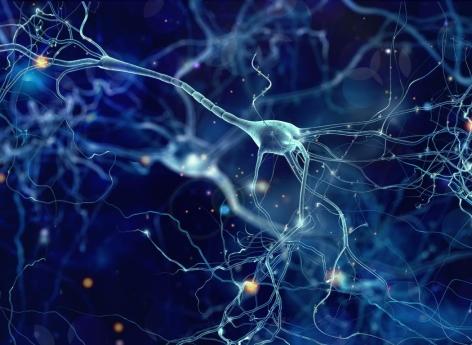primary
- Tourette syndrome patients suffer from tics.
- Relaxation, exercise, or a musical instrument can reduce the frequency and severity of tics.
Blinking your eyes quickly, shaking your head, or clearing your throat several times in a row … These sudden, repetitive, uncontrollable muscle movements, often amplified by states of stress, anger or anxiety, are tics. For people who suffer from it, they can be very annoying. Although it is not considered serious, it is still a sign of a more serious condition such as Tourette’s syndrome. Pharmacological treatments may be offered to patients when the tics are severely disabling but as a rule and when it is not Tourette’s syndrome, they are first offered psychological follow-up to understand the origin of these symptoms. Many reasons have been put forward by researchers to explain the emergence of tics, such as changes in an individual’s life, stress, lack of sleep, or – but not proven – association with neurons.
A network of neurons located in different regions of the brain…
A new study may strengthen this last hypothesis. According to researchers whose work was published in the journal brain, a specific network of neurons could be responsible for the emergence of tics. “Over the past few years, neuroscientists have identified a number of different brain regions that are involved in tics.says Andreas Horn, one of the authors. Despite these recent developments, some important questions remain unanswered: Which of these brain regions is responsible for these tics? Which of them activates to compensate for the wrong operations? We have now been able to show that it is not just one area of the brain that is responsible for tics. Rather, it is the result of a network that includes different regions of the brain“.
… which controls many functions
To reach this conclusion, researchers studied the health data of 22 patients who had tics due to brain damage caused by stroke or trauma. Armed with this information, they turned it into a detailed map of which areas of the brain contain these lesions and which other areas of the brain could, via Nerve fibers, are associated with these lesions. Thus, they were able to show that almost all patients’ brain lesions – regardless of their exact location in the brain – were part of a single neural network that spanned multiple regions. “These structures are distributed almost throughout the brain and have a wide range of functions, from motor control to emotion processingOne of the authors, Bassam Al-Fatli, explains. We now know that these areas of the brain form a network and can cause tics.”
Towards a new treatment?
This discovery allowed researchers to test a new treatment method for relieving tics in patients with Tourette’s syndrome: deep brain stimulation. via Pacemaker-like devices. For this, the electrodes were placed in different areas of the brain. The result: when they were on the neural network that the scientists discovered—and thus in relation to tics—the patients had significantly less. Ultimately, this discovery could lead to the development of a new treatment for people with tics.

“Music guru. Incurable web practitioner. Thinker. Lifelong zombie junkie. Tv buff. Typical organizer. Evil beer scholar.”



:format(url)/cloudfront-us-east-1.images.arcpublishing.com/lescoopsdelinformation/L2F6OCLVY5CBBNQ32DX5S7TOBA.jpg)



More Stories
Sophie Adino officially receives her “wings” and will be able to fly in space by 2030
Plants grow mostly in the afternoon
Why should we not confuse academic freedom with the autonomy of science?